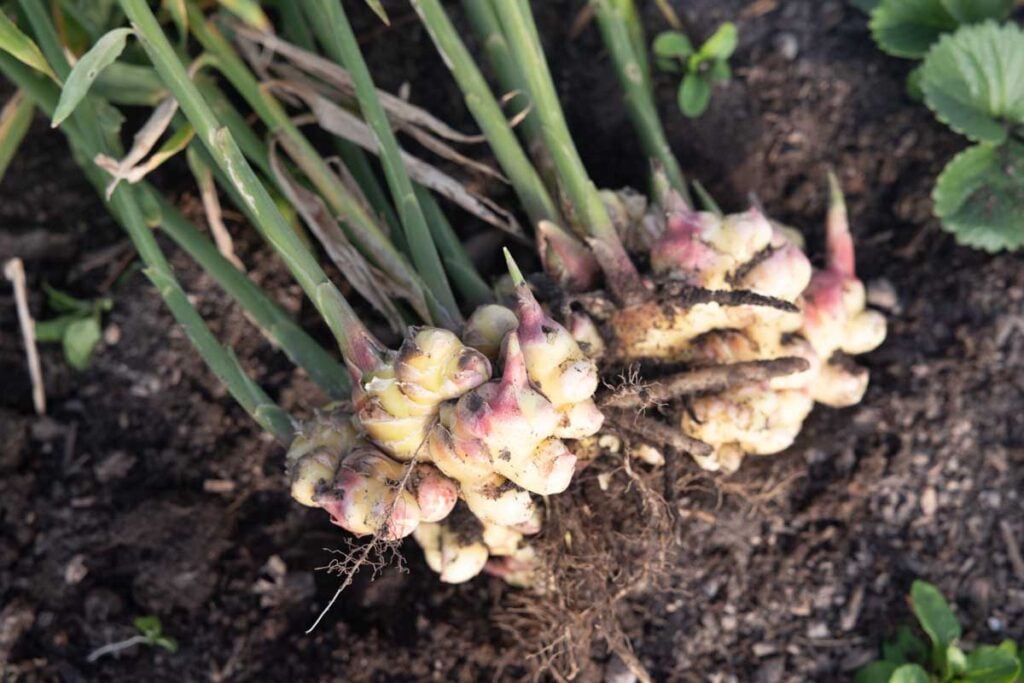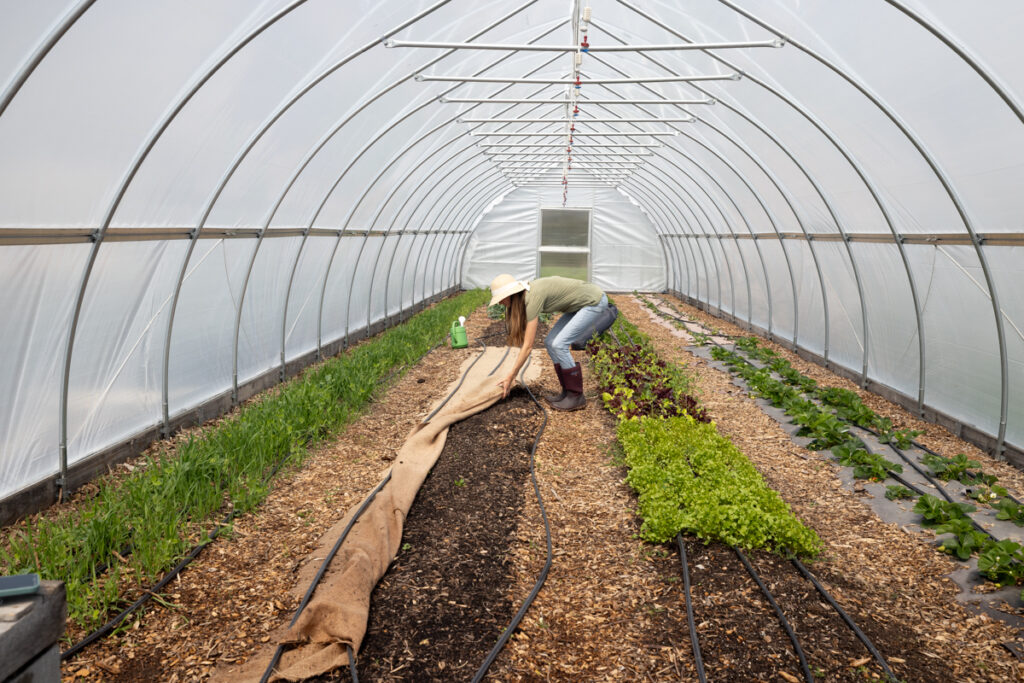Ginger is a tropical plant that thrives in warm and humid environments However, with some care and preparation, it is possible to grow ginger even in cold climates. Here is a step-by-step guide on how to successfully cultivate ginger in colder areas.
Choose the Right Ginger Variety
Not all ginger varieties can tolerate cold temperatures. If you want to grow ginger in a colder area, pick cold-hardy cultivars that can handle frost and cold better. Some good options include:
-
Japanese ginger – Can survive brief frost and temperatures down to 20°F
-
Chinese yellow ginger – Tolerates light frost and temperatures down to 30°F.
-
Galangal ginger – Withstands short freezes when mature. Hardy to USDA zone 7.
Regular ginger from the grocery store probably won’t make it through the winter in cold places, so stay away from it. Buy rhizomes from reputable stores that sell ginger varieties that do well in colder climates.
Start Ginger Indoors
As early as possible in the year, ginger should be sprouted indoors. It needs warm soil and lots of time to grow. Start the process six to ten weeks before the last frost you expect this spring.
Select plump, healthy looking ginger rhizomes with visible buds. Soak the rhizomes in warm water overnight before planting to stimulate growth. Plant them in pots filled with nutrient-rich, well-draining potting mix. Bury the rhizomes 1-2 inches deep with the buds facing upward.
Keep the pots in a warm spot around 70-80°F with indirect sunlight. Use a seedling heat mat to maintain optimal soil temperature. Mist the soil daily to keep it evenly moist. With proper care, the ginger rhizomes should sprout within 2-6 weeks.
Gradually Acclimate Seedlings
Once the ginger seedlings have sprouted, move them outside slowly over the course of 7–10 days. Start by putting the pots outside in a shady area for a few hours a day. Gradually move them closer to the sun. Bring the plants back indoors overnight if frost threatens.
When overnight temperatures stay above 50°F consistently, the ginger can remain outdoors full-time. Before moving it out permanently, harden off the plants by reducing water and temperature over a week.
Plant in a Sheltered Spot Outdoors
Choose an outdoor spot that is protected from wind and frost. Ideal locations include near south-facing walls, close to structures that radiate warmth, or under trees that provide filtered shade.
Plant the ginger 18-24 inches apart in fertile soil amended with compost. Bury the rhizomes 2-4 inches deep in the ground. Add mulch around the plants to retain moisture and heat. For extra warmth, consider using black plastic sheeting or cloches.
Provide Consistent Moisture
Ginger thrives in consistently moist, well-draining soil. Water plants 1-2 inches per week, adjusting for natural rainfall. Use drip irrigation or soaker hoses to prevent wet foliage.
Add organic mulch like wood chips or straw around the plants to help conserve moisture in the soil. Monitor for soggy conditions and improve drainage if needed to prevent rotting.
Use Protective Coverings
In fall, cover ginger plants with cloches, cold frames, or row covers to extend the growing season. These devices help trap heat and protect the plants from frost. Ventilate the covers during the day to prevent overheating.
Bring containers indoors before temperatures drop below 45°F, especially if frost is expected. Closely monitor weather forecasts in autumn and be ready to take protective measures when cold threatens.
Dig Up Rhizomes Before Freezing
In climates with long freezing winters, gently dig up ginger in late fall once the leaves start yellowing. Trim the foliage back to about 2 inches above the soil surface.
Cure the harvested rhizomes for 1-2 weeks in a dry spot with good airflow before storage. Ideal curing conditions are around 70°F and 70% humidity.
Store Cured Rhizomes Properly
After curing, store ginger rhizomes for 2-6 months in a cool, dark place around 55°F. Pack them loosely in dry sphagnum moss or sawdust. Check periodically for shriveling or moldy rhizomes. Discard any that show signs of damage.
With the right ginger variety and careful protection methods, you can grow flavorful ginger even in cold area gardens. Follow these tips to successfully plant ginger and overwinter it in your chilly climate.

How To Grow Ginger in Cold Climates
Ginger grows best in tropical climates, but it can also be grown outside in zones 6, 7, 8, and 9. In these growing zones it is usually grown as an annual crop. I don’t think you should grow plants in zones 5 or lower unless you have a high tunnel or greenhouse to keep them safe.

To grow it as an annual crop, new seed must be purchased each year and all ginger is harvested in the Fall.
If you live somewhere colder than zone 9, you can grow the best ginger plants in a protected area that keeps heat in. More specifically, a greenhouse, high tunnel, low tunnel, or hoop house would trap extra heat and humidity.
Creating a protected space like this doesn’t need to be expensive. In fact, the cost to build a hoop house is likely less than you think. Planting in a space like this really opens up the door to success with heat loving crops like ginger!

Gingers Natural Growing Environment
To be able to understand how to best grow ginger in your climate, it’s important to understand where it thrives. Ginger is a perennial and grows well in tropical climates with high humidity. Even though it’s possible to grow in full sun, it loves a little bit of shade.
Ginger grows year round as a perennial in US growing zones 10-12. An example of where it grows very well as a perennial in the US is Hawaii.
Start Ginger Feb/March To Grow From STORE BOUGHT – Even In Colder Climates
FAQ
How to grow ginger in a cold climate?
Ginger doesn’t like temperatures below 40oF, so plant it a few weeks after the last frost warning. Lay the plants out in rows 36 inches apart, with 6 to 12 inches between each row. Ginger grows well in pots or grow bags. Feed monthly and hill soil around plants at feeding.
What temperature is too cold for ginger?
Many types of ginger are winter hardy to 20ºF (-6ºC), but none can tolerate frozen soil.
Can ginger be grown in the USA?
Ginger is a tropical plant that prefers warm, humid conditions. In Santa Clara County, it can be grown in the ground in the summer, but when the temperatures drop below 50°F at night in the fall, it needs to be dug up or put in a pot and moved to a safe place.
